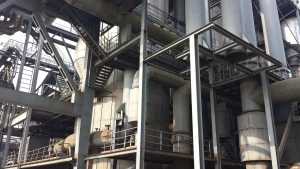![]()
When you compare Polyether vs. Silicone Antifoams, you see clear differences in performance and suitability for industrial applications. Your choice of antifoam agent directly influences process efficiency and final product quality. Selecting the right type helps you improve drainage, enhance machine runnability, and prevent waste.
| Benefit | Impact on Process Efficiency | Impact on Product Quality |
|---|---|---|
| Improved drainage and fiber bonding | Enhances operational efficiency by reducing foam | Ensures better quality and consistency in products |
| Enhanced machine runnability | Reduces downtime and cleaning needs | Maintains product integrity and reduces defects |
| Prevention of waste | Minimizes production interruptions | Supports uniformity and quality in final products |
You also need to consider regional market trends.
Key Takeaways
- Choosing the right antifoam improves process efficiency and product quality. Consider your specific needs to select the best option.
- Polyether antifoams excel in high-pH and high-temperature environments, making them ideal for textile and detergent industries.
- Silicone antifoams provide rapid foam control at low dosages, making them suitable for fast-paced operations like food processing and wastewater treatment.
- Evaluate compatibility with your process and the type of foam present to ensure optimal antifoam performance.
- Testing antifoams in your specific system before full-scale use helps confirm effectiveness and avoid costly mistakes.
Introduction: Foam Problems in Papermaking

Negative impact of uncontrolled foam
You face many challenges when foam builds up during papermaking. Air enters your system in several forms. Dissolved air can escape as tiny bubbles, which create pinholes and circular marks on your finished paper. Entrained air, made up of small bubbles moving with the fibers, leads to visible foam and can cause deposits. Large bubbles rise to the surface, forming thick foam layers that overflow and carry away valuable solid material.
Foam often forms when pulping processes leave behind surface-active substances. If you do not wash bleached pulp thoroughly, these substances remain and increase foam. Excessive sizing, especially with high pH, raises the level of rosin acid salts, which also promotes foam. This foam disrupts your pulp concentration, making it hard to control the flow and stability of your paper stock. Dewatering becomes difficult because foam closes the micropores in the wet web. Floating pulp and agglomerates can form, sometimes causing head breaks during production. In coated paper operations, foam may overflow from storage tanks, disrupt coating, and even lead to environmental pollution.
Tip: Monitoring your process for early signs of foam can help you avoid costly downtime and product defects.
Why antifoams are essential
You need antifoams to maintain smooth and efficient papermaking. By reducing foam, you improve the quality of your paper and minimize defects. Antifoams help you keep your production line running efficiently, increasing throughput and reducing interruptions. They also lower your costs by preventing foam-related issues before they escalate.
- Improved quality: Less foam means fewer surface defects and more consistent paper.
- Increased efficiency: Antifoams keep your machines running without foam blockages.
- Cost reduction: You spend less on repairs, cleaning, and wasted materials.
When you compare Polyether vs. Silicone Antifoams, understanding these foam problems helps you choose the right solution for your mill.
What Are Polyether Antifoams?
Characteristics and mechanism
You encounter polyether antifoams in many industrial processes. These antifoams use block or graft copolymers made from ethylene oxide (EO) and propylene oxide (PO). Their structure gives them unique properties that help you control foam in water-based systems. The table below outlines their main characteristics and how they work:
| Characteristic/Mechanism | Description |
|---|---|
| Composition | Block or graft copolymers of ethylene oxide (EO) and propylene oxide (PO). |
| Strong foam inhibition | Particularly effective at preventing foam formation. |
| Good compatibility | Adjustable solubility in water-based systems, minimizing surface defects. |
| Heat- and alkali-resistant | Stable performance under high temperatures and strong alkalinity. |
| Biodegradable (some types) | Some structures are environmentally friendly. |
| Slower defoaming speed | May act more slowly than silicone-based defoamers. |
| Applications | Used in fermentation, textile dyeing, high-temperature alkaline cleaning, and more. |
You benefit from their adjustable solubility, which allows you to match the antifoam to your specific process. Polyether antifoams often show slower defoaming action compared to silicone types, but they provide steady and reliable foam control. Longer branched chain length and higher branching degree improve their defoaming ability. Branched alkyl polyethers also enhance mechanical performance in hardened mortar and show promise as novel defoamers.
Note: Polyether antifoams can offer a more environmentally friendly option, especially when you choose biodegradable types.
Benefits in high-pH and high-temperature systems
You often face harsh conditions in papermaking and related industries. Polyether antifoams maintain stability and performance even when exposed to high temperatures and strong alkaline environments. Their resistance to heat and alkali makes them ideal for processes like alkaline pulping, high-temperature cleaning, and textile dyeing. You can rely on these antifoams to prevent foam buildup without breaking down or losing effectiveness.
When you compare Polyether vs. Silicone Antifoams, you see that polyether types excel in systems where you need both compatibility and durability under tough conditions. This advantage helps you maintain consistent production quality and reduce downtime in demanding operations.
What Are Silicone Antifoams?
Characteristics and mechanism
You often rely on silicone antifoams when you need rapid and powerful foam control. These antifoams use polydimethylsiloxane, also known as dimethicone, as their main active ingredient. This compound features a non-polar structure and a very low surface tension, typically between 21 and 25 mN/m. Because of these properties, silicone antifoams spread quickly across both oil and water surfaces, breaking down foam with impressive speed.
Silicone antifoams contain several key components that work together to deliver strong performance:
| Component Type | Description |
|---|---|
| Silicone Oil (Polysiloxane) | Main active ingredient, low surface tension (~21 mN/m), includes dimethyl silicone oil and modified silicone oils. |
| Hydrophobic Particles | Includes silicon dioxide and hydrophobic calcium carbonate, treated for high hydrophobicity. |
| Emulsifier/Dispersant | Stabilizes emulsion defoamers, includes non-ionic and anionic surfactants. |
You benefit from the chemical stability of silicone antifoams. They resist reacting with other additives in your process, which helps maintain consistent performance. The mechanism of action involves several steps:
- Silicone oil spreads over the foam surface, while hydrophobic particles move toward the bubble interface.
- The silicone oil and particles form a bridge, creating a local flow in the liquid film due to surface tension differences.
- Weak spots develop, causing bubbles to merge or burst, which rapidly eliminates foam.
This unique mechanism allows you to control foam quickly and efficiently, even in challenging industrial environments.
Benefits at very low dosage levels
You can achieve excellent foam control with silicone antifoams using only a small amount. Their high activity means you need less product to get the same or better results compared to other antifoam types. This efficiency reduces your chemical costs and minimizes the risk of negative side effects, such as deposits or interference with downstream processes.
Silicone antifoams perform well in a wide range of systems, including those with high temperatures or aggressive chemicals. You can use them in papermaking, wastewater treatment, and chemical manufacturing. When you compare Polyether vs. Silicone Antifoams, you see that silicone types often provide faster foam knockdown and require lower dosages, making them a preferred choice for many high-speed or sensitive operations.
Tip: Start with the lowest recommended dosage of silicone antifoam and adjust as needed. This approach helps you optimize performance and control costs.
Polyether vs. Silicone: Key Differences
Efficiency and cost comparison
When you evaluate efficiency and cost, you notice distinct differences between polyether and silicone antifoams. Silicone-based agents deliver rapid foam control and high stability, especially in food processing and chemical manufacturing. You often need lower dosages, which can reduce your overall chemical costs. Polyether-based agents work well in textile and detergent industries, showing good synergy with other chemicals and effectiveness at low concentrations. However, you may require higher amounts to achieve the same foam control as silicone types.
| Type of Anti Foaming Agent | Common Applications | Benefits |
|---|---|---|
| Silicone-based Agents | Food Processing, Chemical Manufacturing | High stability, Effective in high temperatures |
| Polyether-based Agents | Textile and Detergent Industries | Good synergy with other chemicals, Effective at low concentrations |
If you switch antifoam types, you must assess the effectiveness, safety, and regulatory compliance of the new formulation. These steps help you avoid operational disruptions and unexpected costs.
Performance in papermaking systems
You see clear performance differences in papermaking. Silicone antifoams provide superior defoaming and foam control, making them the preferred choice for rapid foam knockdown. Polyether antifoams offer lower toxicity and withstand extreme conditions, such as high temperatures and varying pH levels. You may find polyether antifoams suitable for microbial fermentation or processes requiring resistance to harsh environments. Silicone antifoams excel in water treatment but show only slight resistance to alkalis and acids. You often need to combine polyether antifoams with other agents for optimal results.
- Effectiveness of the new agent compared to the previous one
- Safety concerns related to the new formulation
- Regulatory considerations that may arise from switching to a different type
Environmental and compatibility factors
You must consider environmental impact and compatibility with papermaking additives. Silicone antifoams present lower environmental concerns and work effectively at low dosages. However, they may be incompatible with black liquor, which can enhance their effectiveness in certain systems. Polyether antifoams show variable environmental impacts due to different polarities. Their compatibility depends on solubility characteristics, which can affect performance in your process.
| Antifoam Type | Environmental Impact | Compatibility with Papermaking Additives |
|---|---|---|
| Silicone | Lower environmental concerns; effective at low dosages | Incompatible with black liquor, enhancing effectiveness |
| Polyether | Varies; may have negative impacts due to different polarities | Compatibility affected by solubility characteristics |
When you compare Polyether vs. Silicone Antifoams, you must weigh efficiency, cost, performance, and environmental factors to select the best solution for your operation.
Applications in Industry

Papermaking
You rely on antifoams to maintain process stability and product quality in papermaking. Silicone defoamers play a vital role by controlling foam, improving drainage, and supporting sustainability initiatives. You see faster water removal during washing, which leads to cleaner pulp and lower energy consumption in drying. These benefits help you meet sustainability goals by reducing water, energy, and chemical usage. Polyether antifoams also contribute, especially when you need compatibility with harsh chemicals or high temperatures. When you compare Polyether vs. Silicone Antifoams, you notice that each type offers distinct advantages for your mill’s operational needs.
Wastewater treatment
You encounter foam issues frequently in wastewater treatment plants. Antifoams are essential because they prevent foam from disrupting your process and equipment. Silicone-based antifoams are the most common choice. You benefit from their effectiveness across a wide range of conditions, including variable temperatures and chemical loads.
- Antifoams control foam formation, ensuring smooth operation.
- Silicone antifoams deliver reliable performance in diverse wastewater environments.
Fermentation and chemical processing
You face unique challenges in fermentation and chemical processing. Polyether-based defoamers provide quick action and remain effective after high-temperature sterilization. You use them in bioreactors because they break foam efficiently, maintain compatibility with the broth, and produce minimal residue. This low residue is crucial for pharmaceutical and food applications. Silicone antifoams suppress foam rapidly, but you may experience residue buildup and compatibility issues, which can affect product quality.
| Industry | Application Description |
|---|---|
| Textile | Used in sizing, dyeing, and chemical fiber oiling processes to prevent foaming. |
| Petrochemical | Employed in drilling, oil extraction, and refining processes to enhance production and reduce foaming. |
| Food | Utilized in food processing with specific polysiloxane resins for defoaming in aqueous and oil-based products. |
| Paint and Ink | Prevents defects in coatings and improves the quality of water-based and non-water-based paints. |
| Detergent Industry | Acts as an additive in powder detergents and metal cleaning fluids to enhance performance. |
Tip: You should select antifoams based on your process requirements, regulatory standards, and compatibility with other additives.
Amazon Chemicals’ Defoamer Portfolio
Azpc® Pe-D01 (polyether-based)
You need a defoamer that performs reliably in tough environments. Azpc® Pe-D01 gives you consistent foam control in high-pH and high-temperature systems. This polyether-based product works well in alkaline pulping, textile dyeing, and industrial cleaning. You see stable results even when your process faces strong chemicals or elevated temperatures. Azpc® Pe-D01 helps you maintain process efficiency and product quality. You can use it in fermentation and chemical processing, where compatibility and low toxicity matter. Amazon Chemicals designs this product to meet strict environmental standards, so you can improve sustainability in your operations.
Note: Polyether defoamers like Azpc® Pe-D01 offer a balance between performance and environmental compliance, making them suitable for mills aiming to reduce their ecological footprint.
Azpc® Si-D02 (silicone-based)
You want rapid foam knockdown and minimal dosage. Azpc® Si-D02 delivers powerful performance in high-speed papermaking and water treatment. This silicone-based defoamer works across multiple stages, including pulping, bleaching, and recycled fiber deinking. You can also use it in coating color kitchens, starch preparation, and condensate recovery units. The product’s technical specifications help you match it to your process:
| Product Name | Appearance | Solid Content (%) | pH Value | Thinner |
|---|---|---|---|---|
| Azpc® Si-D02 | White to light yellow emulsion | ≥40 | 6-8 | 2.5%~3% polyacrylic acid thickened water |
- Ideal for tissue and packaging grades
- Suitable for pulping and bleaching
- Effective in recycled fiber deinking
- Used in coating color kitchens and starch preparation
- Applicable in evaporation and condensate recovery
You should store Azpc® Si-D02 in 200kg PE drums, in a dry, cool, and well-ventilated area. Keep the temperature between 4-30 °C. The shelf life is 6 months.
Tailored solutions for mills worldwide
You face unique challenges in your mill. Amazon Chemicals offers a wide range of defoamer products, including silicone, polyether, and fatty alcohol types. These solutions help you boost efficiency and meet environmental regulations. You can select products designed for paper production, wastewater treatment, and coatings. Amazon Chemicals works with you to customize solutions for your specific needs, ensuring you achieve reliable foam control and consistent product quality.
Conclusion & CTA
You face a critical decision when selecting between polyether and silicone antifoams. Each type offers unique strengths that can impact your process efficiency and product quality. Polyether antifoams deliver reliable performance in high-pH and high-temperature environments. Silicone antifoams provide rapid foam knockdown at low dosages and excel in fast-paced operations.
When you make your final choice, you should focus on several important factors:
- System compatibility remains crucial. Your process may require a specific type of defoamer to avoid unwanted reactions.
- The type and origin of foam influence which antifoam works best. You need to match your solution to the foam’s characteristics.
- Key performance features include immediate defoaming, long-term foam suppression, migration tendency, thermal stability, and dosage efficiency.
Recent innovations in antifoam technology give you more options than ever before. You see a shift toward sustainable solutions, including bio-based and plant-based defoamers. Advanced formulations in both silicone and non-silicone products improve versatility and performance. Nanotechnology now plays a role, with nanoparticles enhancing foam control efficiency.
Tip: You should always test antifoams in your specific system before full-scale adoption. This step helps you confirm compatibility and optimize results.
| Antifoam Type | Best For | Key Strengths |
|---|---|---|
| Polyether | High-pH, high-temp systems | Stability, environmental options |
| Silicone | Fast knockdown, low dosage | Speed, efficiency, versatility |
You benefit from consulting technical experts when your process involves complex chemistry or strict regulations. Their guidance helps you avoid costly mistakes and ensures compliance with industry standards.
You can improve your operation by choosing the right antifoam. Reach out to Amazon Chemicals for tailored solutions and expert support. Your process deserves the best foam control technology available.
You see clear distinctions between polyether and silicone antifoams.
- Modified silicone defoamers disperse rapidly and resist high temperatures, making them ideal for chemical processes.
- Polyether-modified polysiloxane defoamers excel in oil and gas applications, offering superior efficiency and quick operation.
- The structure and ratio of components influence antifoam performance.
| Criteria | Description |
|---|---|
| Compatibility | Choose antifoams that blend well with your process medium. |
| Deposit Issues | Select products that avoid unwanted deposits. |
| Effectiveness | Match the antifoam to your specific application needs. |
For complex or regulated environments, you should consult technical experts to ensure optimal results and compliance.
FAQ
What is the main difference between polyether and silicone antifoams?
You see the main difference in their chemical structure and performance. Polyether antifoams excel in high-pH and high-temperature environments. Silicone antifoams provide rapid foam knockdown at low dosages.
Can you use silicone antifoams in food processing?
You can use silicone antifoams in food processing. Many products meet food-grade standards. Always check regulatory compliance and product certifications before application.
How do you choose the right antifoam for your process?
You should evaluate your system’s pH, temperature, and compatibility with other additives. Test antifoams in your process to confirm effectiveness and avoid unwanted reactions.
Are polyether antifoams environmentally friendly?
Some polyether antifoams offer biodegradable options. You should review product specifications and environmental certifications to ensure compliance with sustainability goals.
What is the recommended storage for antifoam products?
You need to store antifoam products in cool, dry, and well-ventilated areas. Keep containers sealed and follow manufacturer guidelines for temperature and shelf life.






